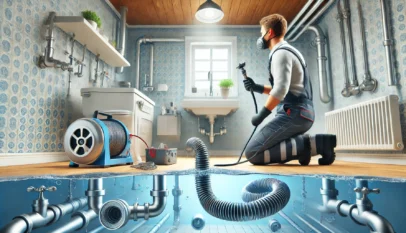
Drain camera inspections are an essential tool for effectively diagnosing plumbing issues. This process utilizes advanced technology to view the inside of pipes, helping to identify blockages, cracks, or corrosion without invasive procedures. By using drain cameras, property owners can save time and money by pinpointing problems accurately before they escalate.
Many homeowners are unaware of the benefits of drain camera inspections. They not only facilitate quicker diagnoses but also provide clear visual evidence that can aid in decision-making about repairs. This approach not only enhances the efficiency of plumbing services but also promotes long-term maintenance strategies.
The use of a drain camera can be particularly valuable during routine inspections or when experiencing frequent plumbing issues. It brings clarity to concerns, ensuring that the right solutions are applied. Harnessing this technology can lead to a more informed and proactive approach to plumbing care.
Technical Aspects of Drain Camera Inspections
Drain camera inspections utilize advanced technology to diagnose issues within plumbing systems. The equipment and process streamline maintenance and repair, offering visual insights that traditional methods cannot provide.
Equipment and Technology
Modern drain camera inspections rely on specialized equipment designed for various types of plumbing systems. Key components include:
- Cameras: High-resolution cameras capture clear images and videos of the interior of pipes. They often feature LED lights to illuminate dark areas.
- Cables and Reel Systems: Flexible cables allow the camera to travel through pipes. The reel manages the cable’s deployment and retrieval, ensuring a smooth operation.
- Monitor Displays: Technicians use real-time displays to view camera feeds and assess conditions instantly. Portable monitors are common for on-site evaluations.
Advanced models utilize robotic systems that can navigate complex plumbing paths autonomously, allowing for thorough inspections without manual assistance.
Understanding the Camera Inspection Process
The camera inspection process begins with a thorough preparation of the site. Technicians first assess access points to the drainage system. They then insert the camera into the drain through a clean-out access point.
Once positioned, the camera is activated. It transmits video feed back to the monitor. Operators observe for blockages, cracks, and other signs of damage. Recordings may be saved for further analysis.
This method minimizes disturbances to existing structures or landscapes. It provides an efficient and accurate means of diagnosing plumbing issues without excavation or extensive repair.
Practical Applications and Benefits
Drain camera inspections provide a precise method for assessing the condition of pipes and drainage systems. They offer a range of practical applications that enhance maintenance efficiency and decision-making.
Identifying Common Pipe Issues
Drain camera inspections can detect various pipe issues, including:
- Cracks and fractures: These can lead to leaks and structural failure.
- Blockages: Objects like grease, roots, or sediment can obstruct flow.
- Corrosion: Signs of corrosion indicate potential failures in older pipes.
- Misalignments and breaks: These disrupt the flow and can cause backups.
Using high-resolution cameras, inspectors can identify the exact cause and location of problems. This targeted approach can minimize unnecessary digging and reduce repair costs significantly.
Preventative Maintenance and Planning
Regular drain camera inspections encourage proactive maintenance. By identifying issues early, property owners can plan for repairs rather than face emergency situations. Key benefits include:
- Cost savings: Addressing problems early often costs less than emergency repairs.
- Extended lifespan: Regular monitoring can extend the life of drainage systems.
- Improved reliability: Property owners gain confidence in their plumbing systems.
Establishing a routine inspection schedule tailored to usage patterns helps prevent significant disruptions. This strategy leads to better budget allocation for future maintenance.
Post-Inspection Procedures
Following a drain camera inspection, several critical steps should be taken:
- Report generation: A detailed report outlining findings is essential for records.
- Recommendations: Experts provide specific recommendations based on inspection results.
- Action plan: Property owners should develop a plan for addressing identified issues.
This process ensures that all findings are documented comprehensively, allowing for informed decisions. Timely action based on inspection insights can mitigate the risk of future problems and enhance overall system performance.
Zudio Franchise: Unlocking Success in the Retail Market
Zudio franchises represent a unique opportunity for entrepreneurs looking to enter the fas…




